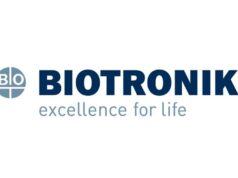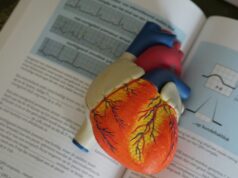
Pre-clinical data, presented at the 13th International Dead Sea Symposium on Innovations in Cardiac Arrhythmias and Device Therapy (IDSS; 6–9 March, Tel Aviv, Israel), have shown that it is feasible and safe to isolate pulmonary veins for the treatment of atrial fibrillation with a novel stent-based and non-invasive technology, which uses contactless energy transfer. Cardiac Rhythm News speaks to interventional cardiologist, Glenn Van Langenhove (Ghent, Belgium), inventor of the technology.
What is the rationale to develop a stent-based technology to isolate pulmonary veins?
Current catheter-based technologies for the treatment of atrial fibrillation face a high recurrence rate. Even the most optimistic reports tend to suggest that recurrence of atrial fibrillation occurs in about 50% of the patients that undergo pulmonary vein isolation with the current technologies. Electrophysiologists agree on the fact that the cause for this recurrence is incomplete isolation. This often appears sometime after the index procedure, potentially due to the healing of the acute inflammation of tissue post-ablation. Also, it remains difficult to create complete lines of isolation in a three dimensional environment such as the pulmonary vein or antrum. Therefore, we developed a method through which contact with the pulmonary vein or antrum would be guaranteed: a self-expanding implant positioned inside the pulmonary vein, where after, using electromagnetic energy transfer, only the proximal ring (located at the entrance of the left atrium) is heated.
Could you describe the technology and how does
it work?
We developed a self-expanding nitinol-based implant that ensures permanent fully circumferential contact with the pulmonary vein wall; three different regions are distinguishable: the active heating part or heat-ring, the connection part and the stabilising part. The heating of the implant (and consequently the ablation of tissue) in the pulmonary veins is performed through a contactless transfer of energy from a primary (or transmitter) coil to a secondary (or receiver, the implant in the pulmonary vein) coil. The energy delivered to the primary coil originates from a 400V 3-phase mains supply. This supply is transformed by the converter (Easyheat 8310 LI, Ambrell) through the primary coil to generate the required electromagnetic field, which induces a current in the secondary coil. This current then—depending on the electrical properties of the coil material—creates heating of the secondary coil (the implant). Using the converter we can adjust the amount of electromagnetic energy created.
The amount of energy that is being dissipated inside the receiver coil (ie. the ablation energy) is perfectly controllable using a proprietary algorithm. Thus we can ablate tissue with far lower temperatures, and with a shorter duration than currently applied.
How many years has the technology been in development for?
I came up with the idea back in 2005. However, being an interventional cardiologist, I was involved in other developments (Thermocore, a company that developed coronary plaque detection and Incubate, a start-up incubator) that took most of my time. Also, I needed the cross-pollination of the electrophysiology field, which actually happened in 2011‒2012. In December 2011 we won the Innovations in Cardiac Interventions (ICI) in Tel Aviv, Israel, award for the best ”Blue Sky Idea” with this concept. The actual development started in 2012.
In what clinical disorders are you planning to use this technology?
Atrial fibrillation is our main target. Of course, one can appreciate that hypertension (renal artery ablation), pulmonary hypertension of unknown origin (pulmonary artery ablation), and other diseases like oesophageal stenosis, tracheomalacie, bile tract stenosis, prostate hypertrophy and all diseases that involve narrowing of a tract of any sort can be targeted.
What are the results of your pre-clinical studies?
Eleven pigs were treated in the first animal studies. In all animals the inferior common pulmonary vein was chosen as ablation target. No major periprocedural complications occurred. We placed a single implant in 10 animals and two implants in one animal. The sizes of the implants were chosen following QCA measurements of the inferior common pulmonary vein, so that the implants were at least 10% larger than the pulmonary vein diameter. All implants were successfully positioned, in one pig we placed two implants in two different pulmonary veins. Average duration of the procedure was 17±22 minutes. After implantation of the devices, the ablation coil was positioned over the animals. Positioning of the coil was done so that the ablation coil and the implant were in the same plane.
Deviations of the plane were fed into the proprietary algorithm, and power/current given was changed accordingly. Temperature measurements were performed following a fixed protocol. The average temperature increase generated in the vessel wall was 8.9±6.8°C.
Duration of ablation was 200±201 seconds. In all animals, pulmonary vein signals were detected distally from the envisaged implantation site and initially pulmonary vein capture led to concurrent increase in heart frequency in all pigs, revealing intact conduction. After ablation, the exact same location was checked for entry and/or exit block. Bidirectional block was confirmed in all 11 animals. Histological data show a marked transmural ablation around the proximal heating ring with loss of tissue architecture. There was no inflammation or necrosis adjacent to the mid and distal section of the implant. At three months, a mild increase in neo-intima proliferation of 0.4±0.5mm was noted (which accounted for a 6±5% “late loss”).
We have, for the first time, shown that complete isolation of pulmonary veins using a contactless externally applied energy source is safe and feasible. All 11 animals received nitinol self-expanding implants into the common ostium of the inferior pulmonary veins at the transition zone between left atrium and pulmonary vein without periprocedural complications. In all animals, sending a test current through the ablation coil, resulted in finding an optimal temperature sensing zone, after which a full ablation current could be applied. All treated pulmonary veins were succesfully isolated. No pulmonary vein reconnection ocurred three months post-ablation in seven pigs.
When are you expecting to initiate in-human studies?
First-in-man is planned for the end of 2016.
What are the next steps?
Getting through the regulatory steps to take us to the first in man is of course the main target of the company right now. The future will bring us a device that includes temperature, pressure and signal monitoring incorporated into flexible electronics, so that remote controlled energy transfer, signal checking and patient monitoring become available.
Glenn Van Langenhove is chief executive office of Fulgur Medical, developer of this stent-based technology









